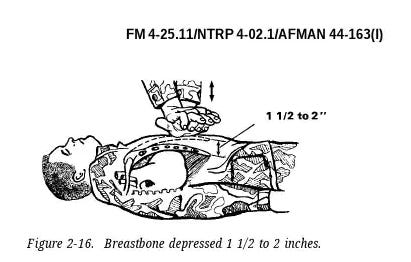We all have to walk point on our own patrol, but it’s easier when you have a tribe behind you. Thanks for being a part of our tribe! -JAD
This year I started volunteering with the team at Project Recover. We are a non-profit dedicated to locating and recovering the remains of American MIAs.
Our biggest fundraising event of the year is the Mission-Miles event in September. The challenge is to register to run, ruck, hike, or walk 100 miles during the month while raising money for an incredible cause.
If you’d like to participate you can register here:
Mission Miles 2024 (runsignup.com)
If not, you can always pledge a donation here.
Thanks!
When teaching Tactical Combat Casualty Care (TCCC), the first lesson is on the lifesaving steps:
Stop the bleeding
Start the breathing
Protect the wound
Treat for shock
For first-time students, this can seem counter intuitive.
“Shouldn’t we start the breathing first?”
It seems like you should. Breathing is pretty important after all.
But the brain can go 4-6 minutes without oxygen, while almost 50% of battlefield casualties in Vietnam died from massive hemorrhage within 2-3 minutes. Many of these casualties could have been saved with a tourniquet.
Plus, the CPR chest compressions needed to restart breathing would only serve to pump the blood out faster.
A lesson here is that sometimes the thing we think we should be doing isn’t the best thing we can be doing.
Sometimes our initial response can make matters worse.
Don’t be busy for the sake of being busy.
Keep your head on a swivel and consider the consequences of your actions.
Please share this post with five friends who need it. Thanks!
Only 4 days left to preorder Tough Rugged Bastards.

I recently had the chance to sit down with Ryan Fugit of Combat Story for a 2-part podcast. This is part 2.
See you next Thursday!





